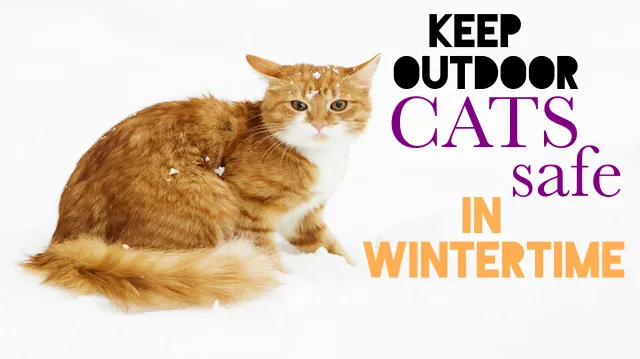Not every kitty has the luxury of a warm bed — possibly yours — and a comfortable, indoor life. Barn cats and other “working” felines live outdoors, as do feral cats and those who can’t acclimate to living inside.
If you care for such cats and live in an area with harsh winters, there are steps you can take to keep outdoor felines safe and warm when the temperatures plummet.
Shelter from the storm
It’s important for cats to have a warm, secure place to stay in cold weather. That’s especially true for feral animals, who don’t have the luxury of a barn loft or similar outdoor building available to domestic working cats.
You can purchase insulated outdoor cat shelters at pet stores, but if you’re caring for a large number of cats, this option quickly becomes expensive. Building your own cat shelter, or repurposing certain items into a suitable feline den, isn’t difficult.
Keep in mind the following when putting together a shelter:
- Choose well-insulated materials when constructing a cat shelter.
- Avoid large interior spaces. Cats will lose too much body heat trying to stay warm.
- Place the shelter on a pallet or other raised area to reduce drafts and retain heat.
- Plan on each shelter holding between three and five felines, who will snuggle together for warmth. If you have more cats, you will need additional shelters.
- Place the shelter in a quiet area, out of the wind. Have the entrance face south, if possible.
- A doghouse designed for a small dog makes an appropriate cat shelter, but avoid those created for bigger canines because they contain too much room for feline warmth. Install a flap on the small doghouse door to keep out the elements.
Alley Cat Allies, a national advocacy organization for feral cats, recommends several types of do-it-yourself shelters for people who aren’t particularly handy. These include plastic tubs with tops, styrofoam lining and a hole cut in the side for a door. Refitted plastic coolers also fill the bill, and the styrofoam lining is already included.
Local cat rescue groups can provide you with more practical information and might have ready-made shelters available for free or a nominal fee.
The right bedding
The best bedding for outdoor cat shelters serves two purposes. It keeps cats warm and dry, and cleaning or replacing it is simple. Many people use newspapers for this purpose. Shred the papers so the cats can burrow, rather than leaving them folded. The alternative use of newspapers is one reason pet owners may prefer to continue receiving their news the old-fashioned way in this digital media age.
Straw makes an excellent bedding choice for cats. Like newspaper, it’s easy to remove and replace. One caveat: Make sure you use straw and not hay. The former is used as bedding, while the latter is fed as forage to horses and livestock. The easiest way to tell the difference is that straw is yellow and hay is green. Hay absorbs moisture and can make the inside of the shelter wet and uncomfortable.
Avoid using towels and old blankets. They aren’t the best bedding because they absorb the moisture tracked or blown into the shelter and can chill the cats.
Food and water

Water is an issue in freezing weather. Unless there is an electrical outlet very close by, using heated water bowls isn’t an option. The Humane Society of the United States recommends using a thick, deep and wide plastic container for water, rather than a ceramic bowl. Pet stores sell solar-heated water dishes and microwavable disks you can place under the water dish to delay freezing.
Unlike food, the water bowl should not go inside the shelter to delay freezing. Placing them there can indeed delay freezing, but there’s an equally good chance a cat will knock over the bowl, resulting in wet, soon-to-be-frozen bedding, or possibly a wet, soon-to-be-frozen feline.
With good and faithful care, your furry friends will all get through the winter. While cats are often inscrutable, it’s a safe bet they’re looking forward to the warmth of spring.
-The Alternative Daily
Sources:
http://www.alleycat.org/WinterWeather
https://www.petfinder.com/helping-pets/feral-cats/winter-care-feral-cats
http://www.humanesociety.org/issues/feral_cats/tips/caring_feral_cats_winter.html
http://www.nycferalcat.org/newsletter/2008-12/winter.htm
http://www.alleycat.org/ShelterGallery
